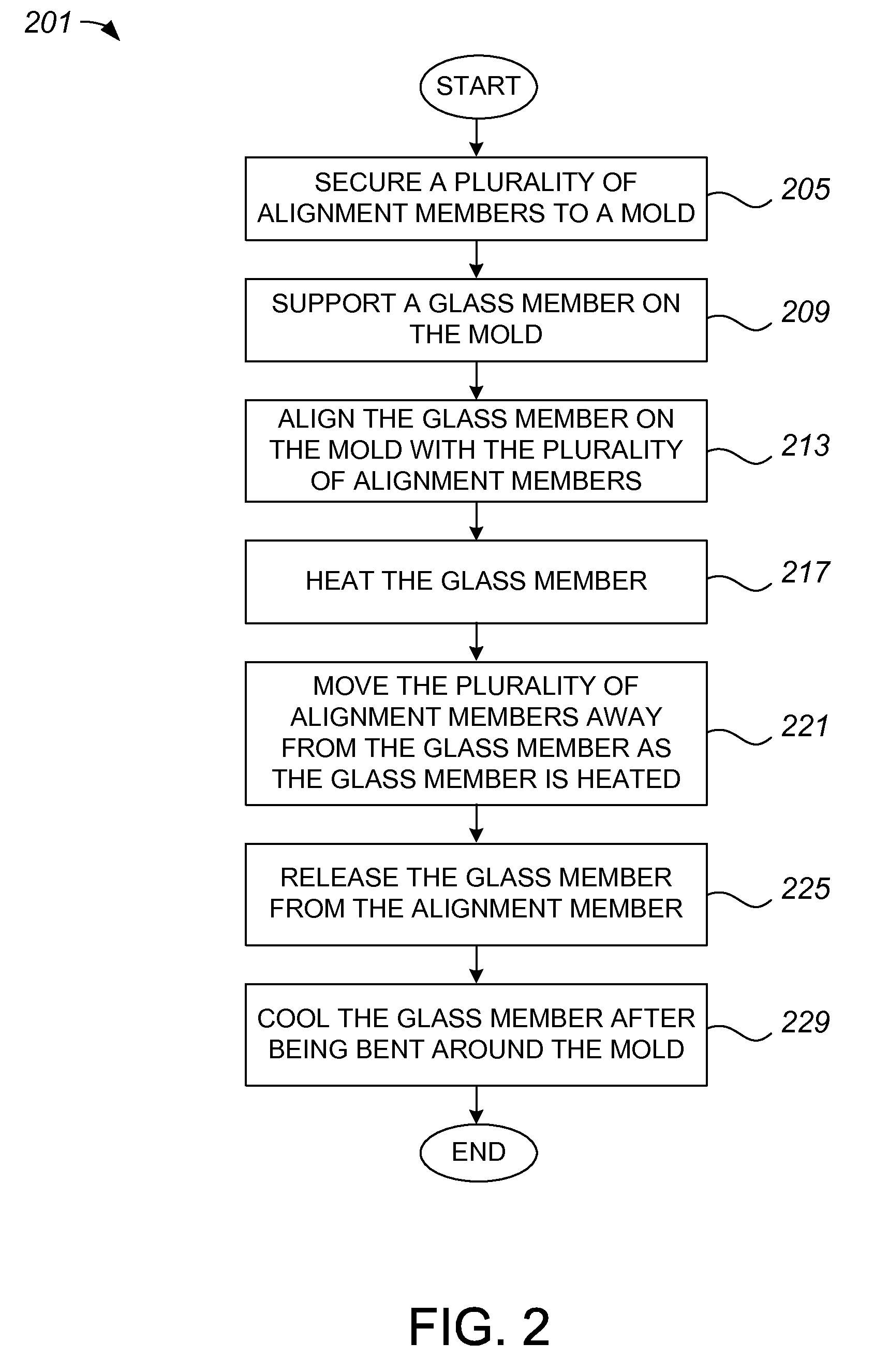Pre-processing techniques to produce complex edges using a glass slumping process
a glass slumping and pre-processing technology, applied in glass tempering equipment, glass making equipment, manufacturing tools, etc., can solve the problems of difficult grinding of complex edges with respect to approximately three axes, significant adverse effects on the overall shape of edges, and complicated grinding of complex edges. achieve the effect of forming a complex geometry
- Summary
- Abstract
- Description
- Claims
- Application Information
AI Technical Summary
Benefits of technology
Problems solved by technology
Method used
Image
Examples
Embodiment Construction
[0026]Grinding complex edges, e.g., edges which involve grinding with respect to multiple axes, on a glass member generally entails a complicated process. For example, it is often difficult to accurately grind complex curves or shapes on a glass member. A complex edge may be a side surface of a glass member that includes angles and surfaces with respect to multiple axes, namely, greater than three axis complexity.
[0027]According to embodiments of the invention, glass parts having complex curves can be formed with complex edge shapes without complicated grinding processing. For example, glass parts for use in consumer electronic products can be formed with complex curves and with edges having relatively complex shapes.
[0028]Embodiments of the apparatus, systems and methods of the invention can provide complex geometries at edges of a glass member by grinding the edges of the glass member, and then performing a slumping process on the glass member. A slumping process may be used to mo...
PUM
| Property | Measurement | Unit |
|---|---|---|
| temperature | aaaaa | aaaaa |
| length | aaaaa | aaaaa |
| height | aaaaa | aaaaa |
Abstract
Description
Claims
Application Information
 Login to View More
Login to View More - R&D
- Intellectual Property
- Life Sciences
- Materials
- Tech Scout
- Unparalleled Data Quality
- Higher Quality Content
- 60% Fewer Hallucinations
Browse by: Latest US Patents, China's latest patents, Technical Efficacy Thesaurus, Application Domain, Technology Topic, Popular Technical Reports.
© 2025 PatSnap. All rights reserved.Legal|Privacy policy|Modern Slavery Act Transparency Statement|Sitemap|About US| Contact US: help@patsnap.com



